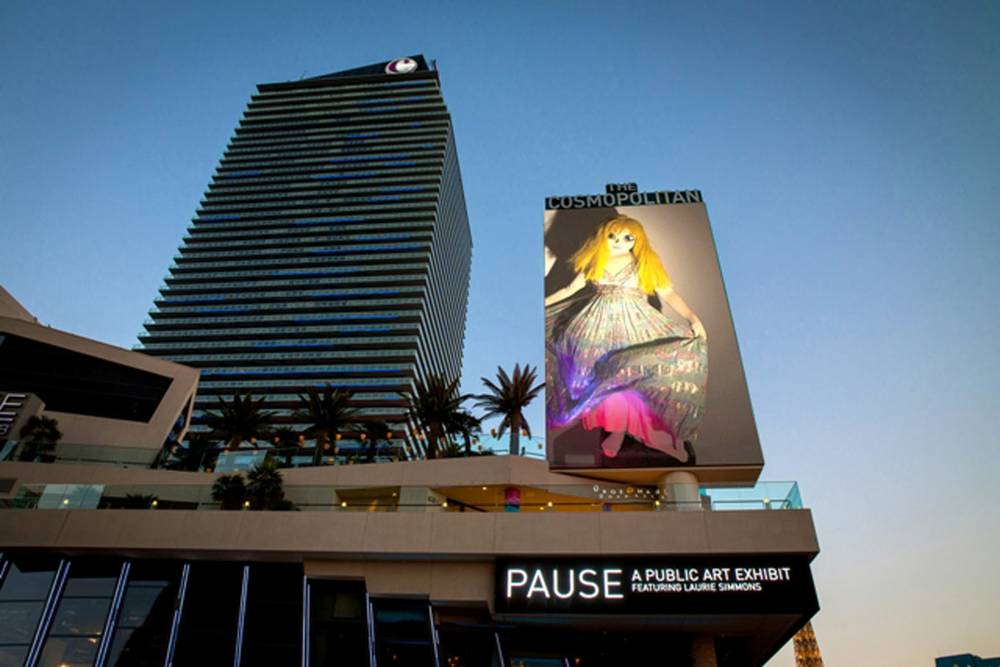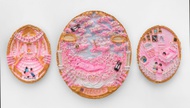At 11:30 on a gray Tuesday morning, a woman emerges from the covered pedestrian walkway on Las Vegas Boulevard, squinting and attentive, focused on the Cosmopolitan’s 65-foot marquee playing a video by New York artist Laurie Simmons.
In the still-frame animation, a human figure dressed in an anime mask and bodysuit pulls up the sides of her floor-length gown as if about to curtsy. Innocent, sexual, human and not, she flirtatiously poses, her butterscotch hair as arresting as the shadow she casts on the wall behind her.
The tourist breaks her gaze and continues shuffling along with her group. The rest of the Strip continues to flicker.
There are few places where the visual and sensory overload are more pronounced than the Las Vegas Strip, a distillation of 21st-century American life, making the arrival of Simmons’ work even more interesting. In an interview early last year, Simmons was discussing what it means to be an artist today and considering the place of the artist in our multimedia visual world.
As part of PAUSE, a public art program with New York’s Art Production Fund, her “Ringtone” video of the “doller,” a human who dresses as a doll, is in the thick of it, placed among the commercialized, hyper design-y advertisement on the LED marquee, looping in direct competition with the Strip's other impatient signage.
And it works. Communicating in techno-language and displayed as anything else in the neighborhood, it still has the power to resonate as something aside from the usual hollering—even without its score, a carnivalesque ringtone medley. You have the hurried and rhythmic alternating of poses and the changing colors illuminating her dress. But more than anything, you have a human body presented as a doll—a youthful, flawless, impossible human, a person in a façade, taking on an identity.
Sadly, without the music it's set to, it isn’t as fully realized on the Strip, but even more of a loss is the portion of Simmons’ 2010 “Geisha Song” (alternating with "Ringtone" and Tracey Emin's "I Promise to Love You") on the marquee without the haunting vocals of Eureka Matsukawa. But at least it's there, living up to the public art program's name.
Simmons has been photographing dolls since the 1970s when she first came into her career as an artist, initially placing them in domestic settings, capturing in one eerie image the 20th-century childlike fantasies of married, domestic life versus, for some, its entrapment.
She moved onto the animegao kigurumi (or dollers) after coming across love dolls in Japan and has made the connection between people’s identities on social media with dollers’ costumed identities. But in the context of the gravitation here toward the “ideal woman”—breast, chin and butt implants, augmented with a perfectly stiff and flawless face—the cosplay characters are not so out of touch with the reality on the ground. So once again Simmons has us rethinking the “ideal” and its expectations, cleverly within the full-on celebration and marketing of that ideal.








